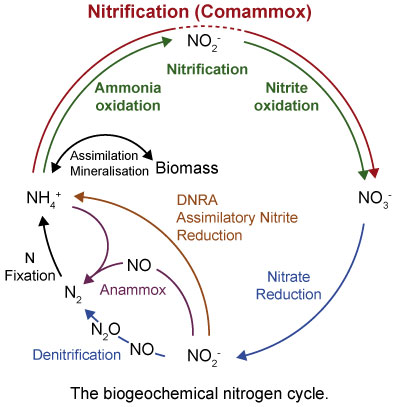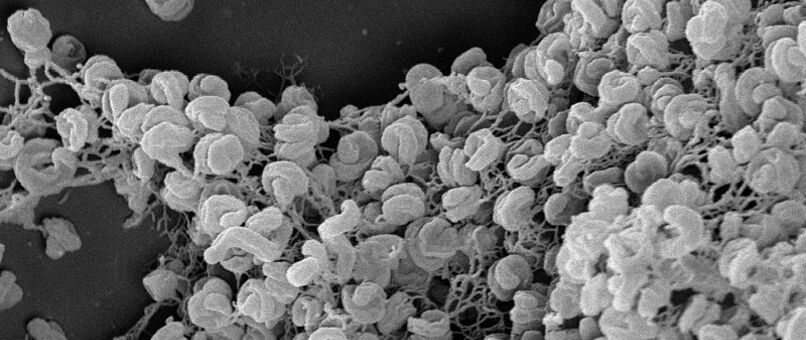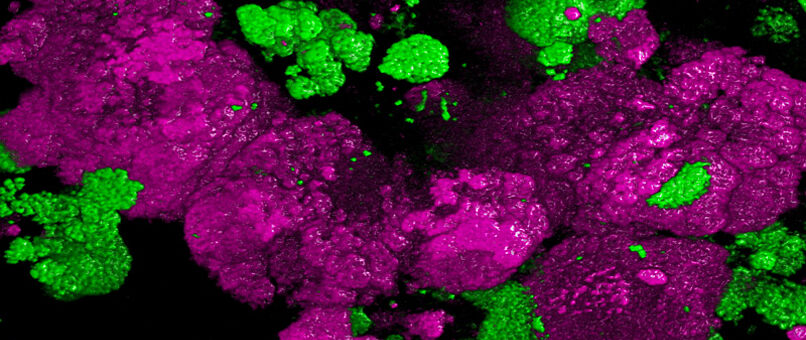Microorganisms provide a basis for all life on our planet by catalyzing essential processes of the biogeochemical element cycles. One of these processes is nitrification - the oxidation of ammonia to nitrite and further to nitrate. Aside from its key role in the natural nitrogen cycle, nitrification is indispensable for biological wastewater treatment. However, nitrification also causes massive loss of fertilizer nitrogen from agricultural soils.
For decades, nitrification research relied on the firm assumption that different, ammonia- or nitrite-oxidizing microorganisms must cooperate to catalyze this process.This paradigm was turned over by a recent surprising discovery: complete ammonia oxidizers (comammox bacteria) were found, which are able to perform full nitrification on their own.This finding has revealed an unexpected, large gap in our knowledge of nitrification: comammox organisms are widely distributed in the environment, but very little is known about their biology and how their activity might be controlled in engineered systems and agriculture. The Comammox Research Platform aims to bridge this gap by investigating the enigmatic comammox bacteria at different scales, ranging from single molecules to complex microbial communities and environmental processes.









